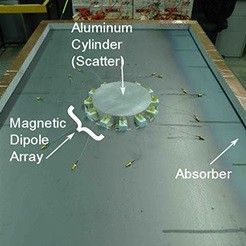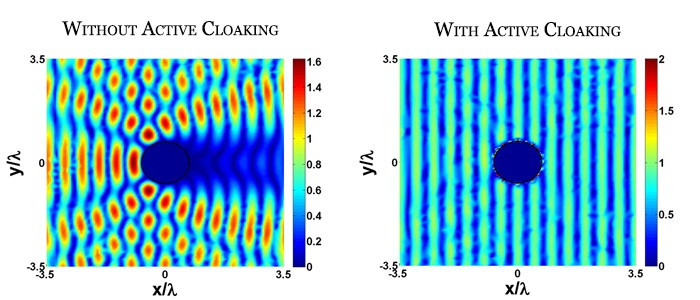Invisibility Cloak Scientists Hide Test Objects from Radar Detection - World First

The world's first demonstration of an invisibility cloak has taken place in Canada, with scientists showing how the cloak can be adapted to different sizes and types of object.
Scientists at the University of Toronto have shown an effective invisibility cloak that is thin, scalable and adaptable.
The cloak was designed and tested by George Eleftheriades and Michael Selvanayagam by surrounding an object with small antennae that radiate an electromagnetic field. The field cancels out radio waves coming off the object making it invisible to radar.

"We've taken an electrical engineering approach, but that's what we are excited about," Eleftheriades said.
"It's very simple: instead of surrounding what you're trying to cloak with a thick metamaterial shell, we surround it with one layer of tiny antennas, and this layer radiates back a field that cancels the reflections from the object."
They demonstrated that a metal cylinder could be hidden from radio waves using one layer of loop antennas. The system can be increased for larger objects, using more loops.
Loops must be manually attuned to the electromagnetic frequency they need to cancel but researchers say that in the future they could be set to adjust to different waves in real time.

Invisibility cloaks have been in development for seven years but most technology means that the cloak is big, clunky and impractical for real-world use.
The Canadian researchers said their invisibility cloak has potential for use in the military, for hiding vehicles or conducting surveillance operations.
They also said it could be used to eliminate obstacles including buildings from interrupting signals from cellular base stations by allowing them to pass by freely.
Eleftheriades said their invisibility cloak could be retuned to hide light waves but believed there would not be as many uses for this technology.
"There are more applications for radio than for light. It's just a matter of technology - you can use the same principle for light, and the corresponding antenna technology is a very hot area of research."
© Copyright IBTimes 2025. All rights reserved.






















